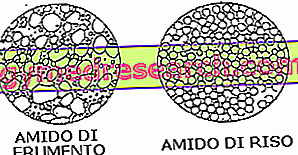Definition
The acronym "AIDS" is the acronym of Acquired Immunodeficiency Syndrome : it is a severe acquired immune deficiency syndrome, caused by the HIV virus (type 1 and 2). In other words, AIDS is an immune disorder with a viral etiology, responsible for the alteration of the immune system, due, in turn, to the lack of CD4 + T lymphocytes (virus target).
Causes
AIDS is caused by an infection sustained by the type I or II Human Immunodeficiency Virus ( retrovirus belonging to the Lentivirus subfamily), transmitted mainly through sexual, maternal-fetal or blood (infected blood transfusions, injections with infected syringes, hemophilia, etc.).
Symptoms
AIDS is a subtle disease, which progresses slowly but inexorably: the latency period is in fact estimated around 8-10 years, in which the subject does not realize he is infected. After this period, the first pathologies manifest themselves, of intensity proportional to the immune damage: alteration of appetite, asthenia, cachexia, diarrhea, weight reduction, migraine, fever, swollen lymph nodes, jaundice, sore throat, pneumonia, night sweats, cough, toxoplasmosis, tremors. Complications: AIDS increases the risk of developing tumors.
Information on AIDS - Drugs for the treatment of AIDS is not intended to replace the direct relationship between health professional and patient. Always consult your doctor and / or specialist before taking AIDS - AIDS treatment drugs.
drugs
To date, AIDS is not curable, even though the research has made great strides, increasing life expectancy around 30 years. Some drugs, in fact, are able to slow down or even block the degeneration of AIDS; it is recommended to undertake a therapeutic course exclusively under the supervision of specialists in the field.
Thus established that it is not possible to recover from AIDS, the assumption of drugs - however highly toxic and dangerous when used indiscriminately - includes:
- antiretroviral therapy
- cures for the prevention of infections: the HIV virus damages the T lymphocytes, therefore the immune system is increasingly weakened and sensitive to bacterial infections
- cancer therapy (related to HIV infection)
- administration of growth factors
- palliative therapies, aimed at reducing symptoms
Antiretroviral drugs for the treatment of AIDS
- Efavirenz (eg Sustiva, Stocrin) Pharmacological class of belonging: non-nucleoside inhibitors of reverse transcriptase. For adults, it is recommended to take 600 mg of active once a day. For children and young people between the ages of 3 and 17, the dose depends on body weight. The drug can be taken alone or in combination with other active ingredients (eg Atripla: efavirenz 600 mg + Emtricitabine 200 mg + Tenodovir disoproxil 245 mg).
- Nevirapine (eg Nevirapina Teva, Viramune) Pharmacological class of belonging: non-nucleoside reverse transcriptase inhibitors. The drug is generally combined with other antiretroviral active ingredients, which enhance its action. Therapy is started with 200 mg of drug, once a day, for 2 weeks: the dose is low to observe any skin reactions, a typical side effect of the drug. If no serious side effects are found, take the medicine (200 mg) twice a day.
- Ritonavir (eg Norvir) the drug belongs to the class pharmacological class of protease inhibitors, and is indicated to treat AIDS in combination with other antiretroviral drugs, especially for patients in therapy for two years already. Take 600 mg of drug twice a day for the treatment of AIDS. The drug, as previously mentioned, is often combined with other antiretroviral active ingredients, as an enhancement of primary therapy: in similar situations, the drug is used as a pharmacokinetic enhancer (indicatively, the dose varies from 100 to 200 mg, once / twice a of).
- Enfuvirtide (eg Fuzeon): exercises its therapeutic activity by inhibiting the HIV virus inside the host cell; this drug is generally given as a second choice, for those patients previously treated with antiviral drugs (described above), but who have not reported any obvious benefit. Taken intravenously or intramuscularly (on the upper arm or in the thigh), the indicative dose for adults with AIDS is 90 mg twice a day. Do not take under 6 years.
- Amprenavir (eg Agenerase): (pharmacological class of belonging: protease inhibitors) for children over 12 years, and for adults with AIDS, it is recommended to take the drug at a dose of 600 mg, in duplicate 24-hour dose. Efficacy is enhanced when ritonavir, 100 mg twice a day, is added to this substance.
- Fosamprenavir (eg Telzir): pharmacological class of belonging: protease inhibitors. It is a prodrug of amprenavir. Take 700 mg twice a day (indicative dose for adults and for children aged between 6 and 12, weighing more than 39 kilos).
- Raltegravir (eg Isentress): it is recommended to take the drug at a dose of 400 mg orally, twice a day, for adults infected with HIV. The indicative dose for children aged 16 or over, with AIDS, is the same (400 mg twice a day).
Among the other antiviral drugs, less used in AIDS therapy, are:
- Atazanavir (eg Reyataz) take 300 mg once a day, in combination with 100 mg ritonavir. Take the product on a full stomach.
- Lopinavir (eg. Kaletra): in addition to lopinavir, the pharmacological preparation also contains another active ingredient, ritonavir. As an indication, take three capsules (133.3 mg of lopinavir and 33.3 mg of ritonavir), twice a day, for children with AIDS, aged between 2 and 12, who weigh more than 40 kilos. Adults starting treatment for HIV infection for the first time should take 4 capsules a day. Consult your doctor.
- Nelfinavir (eg. Viracept) the drug to treat AIDS symptoms can be found both in tablets and in oral powder. Take 1250 mg twice a day, or 750 mg of drug three times a day, preferably on a full stomach.
- Tipranavir (eg Aptivus) in the form of capsules or oral suspension, it is recommended to take the drug at a dose of 500 mg, twice a day, preferably on a full stomach. The dose described above is particularly indicated for adults and for children over 12 years with AIDS, who have been treated for at least two years with antiretroviral drugs.
- Zidovudine (eg Trizivir, Combivir): it is a drug used in therapy against AIDS (class: nucleoside reverse transcriptase inhibitors). Generally, it is associated with other anti-HIV active ingredients (eg lamivudine, abacavir). The dosage must be established by the doctor based on the patient's condition (age, health, weight, etc.) and the combination of active ingredients present in the drug.
- Tenofovir (eg. Atripla, Truvada): this active ingredient is also often used in combination with others such as efavirenz and emtricitabine (previously analyzed). Sometimes, it is used on its own (eg Viread) at a dose of 245 mg / day (1 tablet) with food.
Immunoglobulins : the administration of immunoglobulins for the treatment of AIDS takes place intravenously. Particularly suitable for children with HIV: the general dose is 400 mg / kg (1 dose) every 2-4 weeks, especially in case of severe recurrent infections during the year.
AIDS in pregnancy :
even if the HIV virus can be transmitted via maternal-fetal route, an adequate and immediate drug therapy certainly prevents the risk of transmitting the disease to the unborn child. The mother can take zidovudine (monotherapy), or a combination of several antiretroviral drugs, which reduce the chance of transmitting the virus to the fetus and constitute a valid therapy for the mother (starting from the 16th week).
Avoid breastfeeding in case of seropositivity: the virus can pass from the mother to the newborn also through breast milk. Artificial breastfeeding is recommended.
Palliative care and treatments for AIDS
The drugs used as parallel therapy to the antiretroviral one are not effective against the HIV virus, therefore for the purpose of recovery from the disease they are in vain; however, the administration of so-called "palliative" drugs is in any case essential to help the patient live better with the disease, with less pain:
- Adequate nutritional intake: useful for balancing nutritional decompensation (AIDS affects hunger perception)
- In case of diarrhea, administer antidiarrheal drugs
- To cure dehydration (caused by diarrhea / vomiting), a rehydration therapy based on electrolytes, potassium, sodium, rice starch, glucose etc. is required. This therapy can be taken by mouth (through nutrition or supplementation with specific products) or intravenously, if the patient fails to feed properly.
- Antihypertensive drugs are indicated to correct blood pressure values if the patient is also suffering from hypertension
- Anabolic steroids can only be taken in the event of an obvious and dangerous weight loss
- The administration of NSAIDs and opiates is useful for calming the pain caused by secondary diseases, in the context of AIDS: the HIV virus, as we have seen, weakens the immune system, making the body more exposed to bacterial infections and tumors
- The patient with AIDS must also be psychologically supported by experienced staff and family members
Prophylaxis: how to prevent AIDS
It is clear how the prevention of HIV infection is essential to avoid the disease:
- Avoid unprotected sex with people at risk
- Exclude blood donors at risk
- Do not use drugs (an essential, ethical and moral rule, to be always followed, not only as an AIDS prevention)
- Do not use infected syringes
- Avoid pregnancy if the woman is HIV positive
- Prefer artificial breastfeeding in case of mother's seropositivity



